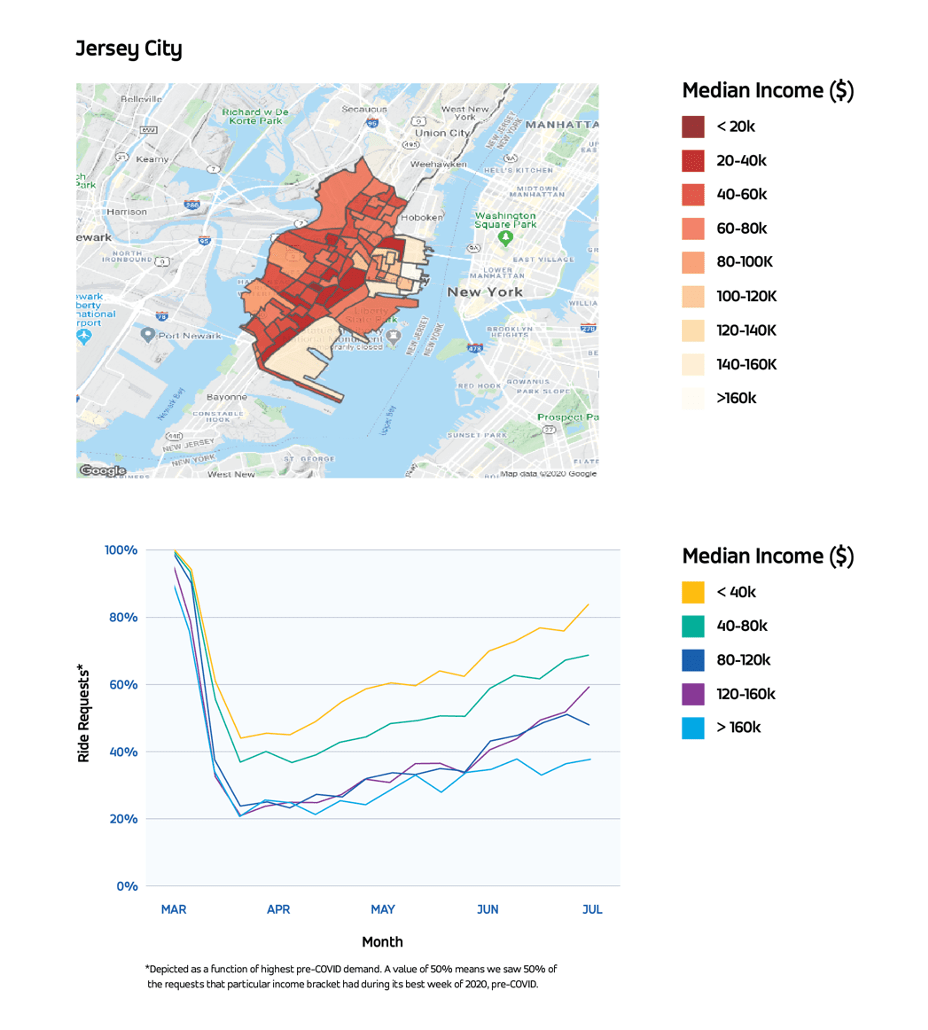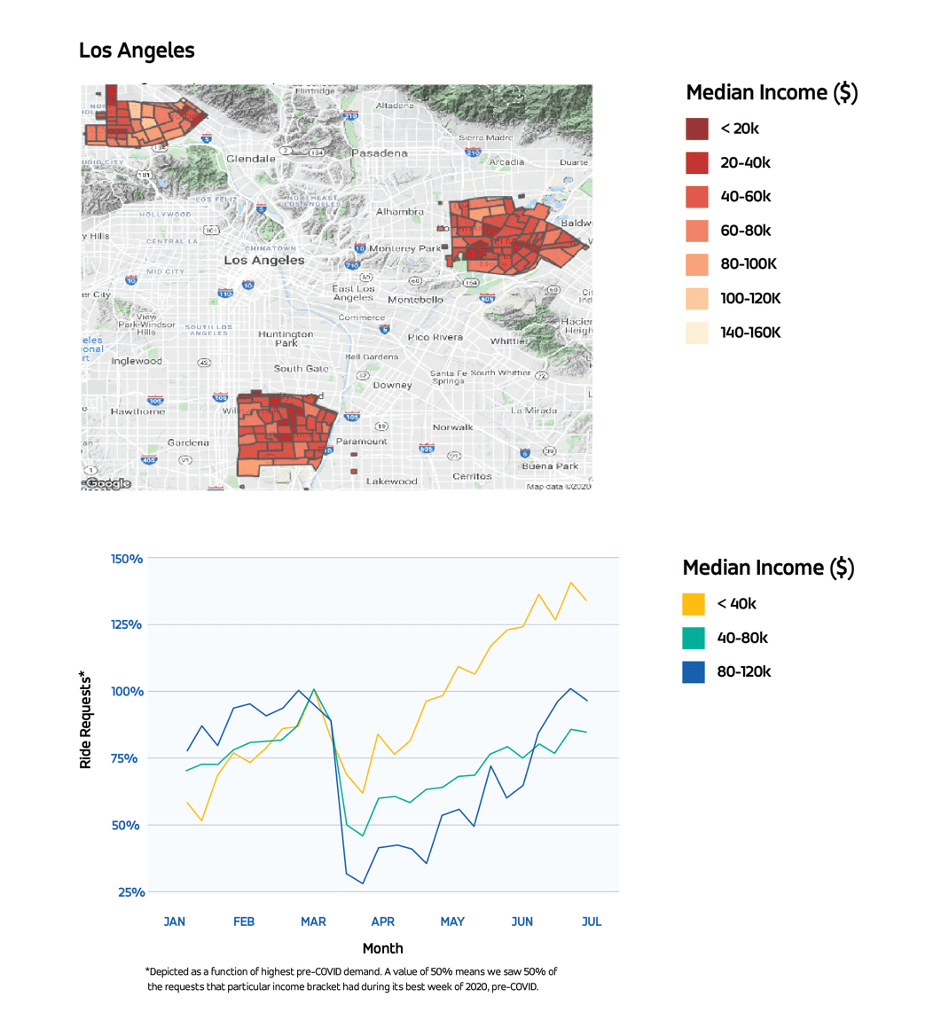New Data Suggests On-Demand Transit is Essential for Equity

Who will you meet?
Cities are innovating, companies are pivoting, and start-ups are growing. Like you, every urban practitioner has a remarkable story of insight and challenge from the past year.
Meet these peers and discuss the future of cities in the new Meeting of the Minds Executive Cohort Program. Replace boring virtual summits with facilitated, online, small-group discussions where you can make real connections with extraordinary, like-minded people.
The COVID-19 pandemic and the Black Lives Matter movement have brought much-needed attention to inequitable structures in our society, including how our transportation systems and cities have been designed. At Via, we’re committed to doing our part to increase access to jobs, educational opportunities, grocery stores, health care, and other critical services. That’s why we’re working closely with cities to improve and expand public transit, especially for underserved communities.

There’s no question that low-income individuals rely more heavily on public transportation than those who are wealthier. According to the American Public Transportation Association (APTA), nearly 70% of all Americans who depend on the bus make less than $50K per year. Many transit agencies and cities across the country have turned to on-demand microtransit over the last couple of years to improve public transportation options for low-income residents. Those who have lower incomes often can’t afford to own a car, and have been systemically underserved by traditional transit networks.
When COVID-19 hit, those in higher income brackets started working from home and using their personal vehicles for necessary travel, while millions of lower-income Americans, including a disproportionate number of people of color, don’t have that luxury and have struggled to make ends meet.
“…dynamic, on-demand public transit has proven to be a mobility lifeline for those in low-income areas during this crisis.”
In the midst of COVID-19 shutdowns, on-demand transit has begun serving specific community needs, such as food delivery to vulnerable populations, and transporting hospital workers in the overnight hours. Further, data shows that dynamic, on-demand public transit has proven to be a mobility lifeline for those in low-income areas during this crisis. How’d we find this? We started by choosing three of our partner cities that have launched on-demand public transit solutions: Arlington, one of our longest-running services; Jersey City, one of our newest; and Los Angeles, where we recently celebrated our one-year anniversary. Then, we analyzed how COVID-19’s impact on rider demand related to income levels throughout each city.
WATCH: How to successfully launch and grow an on-demand service.
Jersey City, New Jersey On-Demand
Let’s start with Jersey City, where our recently-launched on-demand microtransit service fills critical gaps in the existing public transit system. New services are providing a much-needed mobility option to and from a centralized zone, including the Downtown area, as well as within the north and southwest sections of the city.

The line graph shows ridership demand peaking around early March, and hitting a low later that month, mirroring trends throughout the transit industry. And yet, the rate of this decrease (i.e., the steepness of the line) in demand in areas with average income under $40K a year, is less extreme than that of the $40K-$80K bracket and, even more markedly, than that of the brackets above $80K. It’s also clear that the <$40K group and the $40K-$80K group have experienced a steady recovery, turning back to microtransit, since early April.
Translation: riders in lower-income areas were not nearly as quick to move away from microtransit during COVID-19, and, looking at data from early April onwards, they have come back to the on-demand service at a stable rate.
READ: Public transit isn’t dead: three ways cities are upgrading their networks.
Via in Arlington, Texas
Next up, we have Arlington, Texas. In Arlington, we entirely replaced a single-route bus service with shared, dynamically-routed, on-demand rides servicing much of the city.

Our line graph shows a consistently higher relative demand among the <$40K and $40K-$80K brackets, compared to the $80K-$120K bracket. We also see the same trend of lower-income areas experiencing a far slower rate of decline during the pandemic than higher-income areas. All of this to say: another point on the equitable mobility scoreboard for on-demand transit.
Arlington will be a particularly fascinating case to keep a close eye on in the coming months, given that this on-demand service comprises the city’s entire public transit system.
WATCH: Four city leaders share their experience with microtransit.
Via in Los Angeles, California
Finally, let’s take a look at Los Angeles and our on-demand shared transit service implemented in partnership with the Los Angeles County Metropolitan Transit Authority (LA Metro) to provide first- and last-mile service to and from Metro stations in North Hollywood, El Monte, and Compton.

As expected, all income levels saw steep drops in demand immediately after COVID-19 hit. The rebounds we’ve seen for the $40K-$80K, and $80K and up brackets have been impressive, with both rising to about 75% of their pre-COVID peak by late May, and the latter group matching its highest demand of 2020 the following month. But, take a look at the <$40K group. Wildly surpassing all expectations, this segment achieved its highest ridership for all of 2020 in June; around 140% of its pre-COVID peak, and demand is continuing to grow.
You might also notice that, in addition to that remarkable recovery, demand for the <$40K group in L.A. only dropped a marginal amount after COVID-19 hit. We believe this is largely due to key changes made to the service by LA Metro and Via, including
- An extension in service hours that coincided with the beginning of the pandemic
- A transition from offering first-and-last mile to end-to-end trips
- Adding essential locations, such as hospitals, to areas of service, in response to the crisis
So, what does this all mean? That the service is functioning exactly as L.A. intended. LA Metro’s on-demand network is acting as a lifeline for riders who still need reliable transit during this time, especially for lower-income residents.
Riding into the future, with everyone onboard.
The data we’ve gathered from these three U.S. partner cities suggests that microtransit has been a vital public resource for lower-income communities during the coronavirus pandemic. Looking ahead, the long term socioeconomic reverberations of COVID-19 mean that affordable, convenient public transportation will remain absolutely critical.
Now is the time for cities to meet a twenty-first century challenge with a twenty-first century solution. By joining the microtransit movement and integrating on-demand options into existing public transit infrastructure, municipalities across the country can better serve their communities and foster economic mobility for all.
Discussion
Leave your comment below, or reply to others.
Please note that this comment section is for thoughtful, on-topic discussions. Admin approval is required for all comments. Your comment may be edited if it contains grammatical errors. Low effort, self-promotional, or impolite comments will be deleted.
1 Comment
Submit a Comment
Read more from MeetingoftheMinds.org
Spotlighting innovations in urban sustainability and connected technology
Middle-Mile Networks: The Middleman of Internet Connectivity
The development of public, open-access middle mile infrastructure can expand internet networks closer to unserved and underserved communities while offering equal opportunity for ISPs to link cost effectively to last mile infrastructure. This strategy would connect more Americans to high-speed internet while also driving down prices by increasing competition among local ISPs.
In addition to potentially helping narrow the digital divide, middle mile infrastructure would also provide backup options for networks if one connection pathway fails, and it would help support regional economic development by connecting businesses.
Wildfire Risk Reduction: Connecting the Dots
One of the most visceral manifestations of the combined problems of urbanization and climate change are the enormous wildfires that engulf areas of the American West. Fire behavior itself is now changing. Over 120 years of well-intentioned fire suppression have created huge reserves of fuel which, when combined with warmer temperatures and drought-dried landscapes, create unstoppable fires that spread with extreme speed, jump fire-breaks, level entire towns, take lives and destroy hundreds of thousands of acres, even in landscapes that are conditioned to employ fire as part of their reproductive cycle.
ARISE-US recently held a very successful symposium, “Wildfire Risk Reduction – Connecting the Dots” for wildfire stakeholders – insurers, US Forest Service, engineers, fire awareness NGOs and others – to discuss the issues and their possible solutions. This article sets out some of the major points to emerge.
Innovating Our Way Out of Crisis
Whether deep freezes in Texas, wildfires in California, hurricanes along the Gulf Coast, or any other calamity, our innovations today will build the reliable, resilient, equitable, and prosperous grid tomorrow. Innovation, in short, combines the dream of what’s possible with the pragmatism of what’s practical. That’s the big-idea, hard-reality approach that helped transform Texas into the world’s energy powerhouse — from oil and gas to zero-emissions wind, sun, and, soon, geothermal.
It’s time to make the production and consumption of energy faster, smarter, cleaner, more resilient, and more efficient. Business leaders, political leaders, the energy sector, and savvy citizens have the power to put investment and practices in place that support a robust energy innovation ecosystem. So, saddle up.






This article confuses public transit, on demand privately owned vehicles (TNCs), and microtransit. It is also written by a company that has an interest in TNCs, so of course the conclusion is that TNCs are wonderful. The scale for “low income” is wrong, using “less than $40,000.” I do not believe that really low income people are using TNCs that much. During the pandemic, public transit has been hit very hard, and people who are dependent on it have seen their physical mobility cut severely. I do not believe that TNCs are making up the slack.